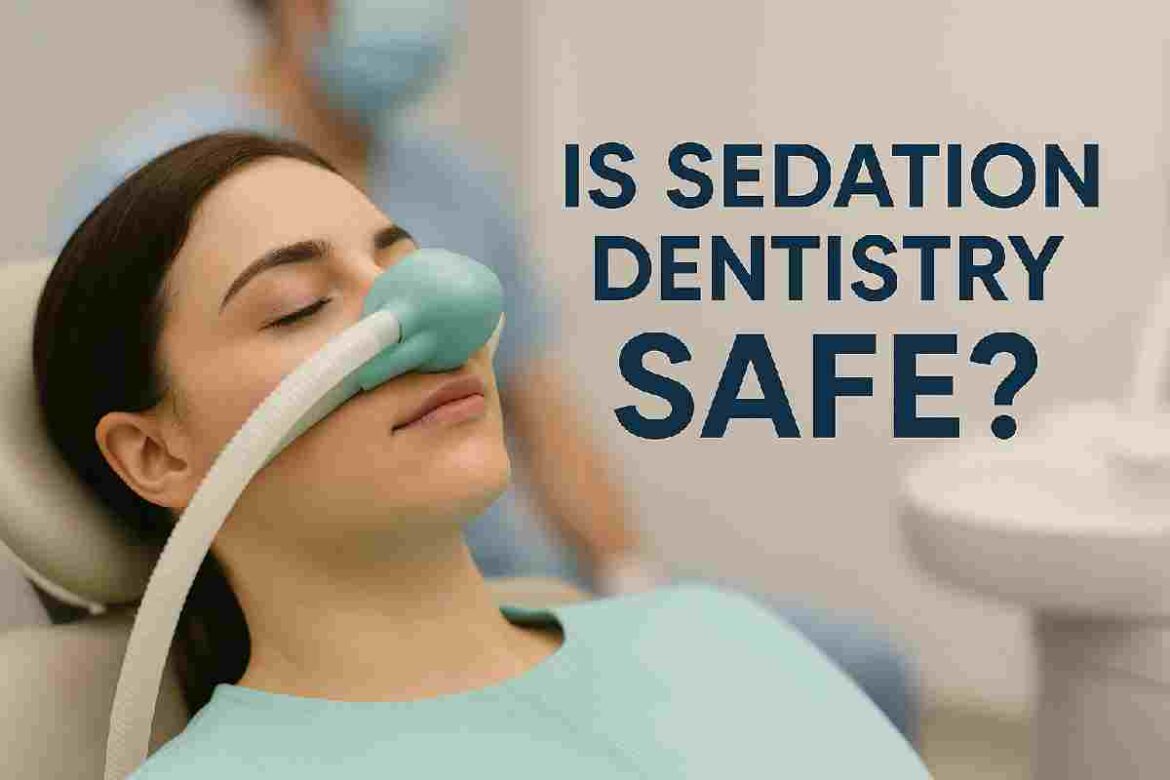For many people, a trip to the dentist sparks anxiety. Sedation dentistry provides a welcoming alternative—offering relief from fear, discomfort, or the memory of past bad experiences. But is it safe? In short, yes, when administered responsibly. In this post, we’ll explore what sedation dentistry is, its safety protocols, risks and benefits, and how to find a trusted provider.
1. Understanding Sedation Dentistry
Sedation dentistry uses medications to help you relax during dental procedures. Depending on your needs, sedation may be:
- Minimal (anxiolysis): You stay awake, alert, and responsive—similar to taking a mild sedative.
- Moderate (conscious sedation): You may slur your speech or doze, but you respond to verbal or light physical prompts.
- Deep sedation or general anesthesia: You’re either barely awake or fully unconscious; typically only offered in hospitals or specialized clinics.
Different methods include:
- Nitrous oxide (“laughing gas”) inhalation
- Oral sedatives like benzodiazepines (e.g., Valium, Halcion)
- Intravenous (IV) sedation
- General anesthesia for complex procedures, children, or special-needs patients
2. Safety First: Rigorous Standards and Guidelines
Sedation dentistry is well‑regulated. The American Dental Association requires:
- Dentists to undergo extensive training appropriate to sedation level
- Continuous patient monitoring (vital signs, oxygen, etc.)
- Immediate access to emergency equipment and medications
Further, the American Society of Anesthesiologists partners with dental boards to uphold Office‑Based Anesthesia guidelines, ensuring:
- Proper credentials (BLS, ACLS)
- Designated staff solely for monitoring
- Strict protocols on patient selection—especially for children and medically complex individuals
Inhaled nitrous oxide is particularly safe—it features built‑in safety mechanisms (oxygen interlock, scavenging systems) and is widely used in over 70% of dental practices for conscious sedation.
3. Benefits—Why Choose Sedation Dentistry?
- Eases dental anxiety: Sedation helps calm nerves, making it easier to undergo treatment you might otherwise avoid.
- Enables longer, more efficient procedures: With sedation, your dentist can often accomplish more in a single visit—fewer appointments and reduced overall stress.
- Better experience for sensitive patients: For those with a strong gag reflex, special needs, or medical conditions aggravated by stress, sedation makes dental work more manageable.
4. Potential Risks—What You Should Know
While sedation is generally safe, it’s not without risk. Possible side effects include:
– Drowsiness, nausea, headache, dry mouth
– Rare allergic reactions
– Unintended deeper-than-intended sedation or respiratory issues—especially in deep sedation or general anesthesia
Risks are higher in:
– Young children with large tonsils (airway obstruction risk)
– Patients with severe health issues (ASA Class III/IV)—they may require hospital‑based sedation
Nonetheless, studies show that complication rates are low. For instance, outpatient IV sedation in oral surgery has been deemed safe, with only rare adverse events. A 15‑year Mayo Clinic review also found minimal issues with its “team anesthesia” model.
5. Ensuring Your Safety
To maximize safety, both patients and dental teams must take precautions:
1. Full medical history — disclose medications, conditions, airway issues, allergies
2. Pre-procedure instructions — fasting is often required to reduce aspiration risk
3. Monitoring during treatment — heart rate, oxygen levels, blood pressure
4. Trained staff and emergency preparedness — BLS, ACLS credentials, resuscitation equipment
5. Post-treatment observation — recovery in office or facility until safe to leave
6. Choose experienced providers — ideally those well-versed in sedation, accredited, and with clean safety records
6. Choosing a Trusted Sedation Dentistry Provider
When seeking care:
– Confirm the dentist or anesthesiologist has specialized training and credentials.
– Ask about the level and equipment for monitoring patients during and after sedation.
– Get clarification on safety protocols and emergency plans.
– Read reviews and ask for referrals.
Many dental clinics promote their services. For instance, City Dental Centers’ sedation dentistry service outlines how they offer safe, comfortable sedation tailored to patient needs.
7. Authoritative Evidence
For official guidance, consult the American Dental Association’s in‑depth Guidelines for the Use of Sedation and General Anesthesia by Dentists. These outline training requirements, monitoring standards, and emergency procedures that ensure sedation is administered safely by qualified professionals. Using these guidelines allows you to feel confident in the safety net behind modern sedation dentistry.
8. Final Thoughts: Is It Safe?
Yes—when you and your dental team do your homework. With proper evaluation, sedative choice, monitoring, and credentials, sedation dentistry has a solid safety record.
Key takeaways:
– Sedation levels are tailored to each patient’s anxiety and procedure.
– Training and accreditation are essential safeguards.
– Adverse events are rare, and clinics follow strict safety protocols.
– Patient participation matters—providing medical history, following fasting, and asking questions about the sedation plan.
If dental anxiety or extensive procedures are holding you back, sedation dentistry can be a life-changing, safe, and effective option. Do your research, ask questions, and partner with a trusted provider to ensure your experience is not only comfortable—but secure.


